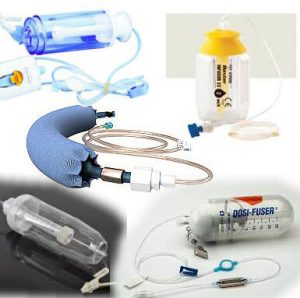
By David Austin
What does the “dream implementation” look like for oncological continuous infusions?
There are a number of key things to consider when designing the ideal continuous infusion protocol for treating cancer. Among the most common are the following:
- Which fluids should be infused?
- How should they be infused (parenterally, enterically or orally, by IV, subcutaneously, by IM, via port, catheter, or midline)?
- What is the ideal dose (for continuous infusion this is expressed in terms of “rate”)?
- Metronomic pulsing criteria, if any (note that historically intermittent pulsing was conventional but non-pulsing continuous flow is becoming the new standard)?
- What is the total duration of treatment? Endpoint considerations?
- What other concurrently administered treatments are essential?
“When cancer wins it happens in between the cancer-killing treatments. Always. It’s that simple. The battle against cancer is decided in the spaces between conventional treatments, not during conventional treatments themselves.”
Over the next few blog entries I will be discussing these in greater detail, since these factors determine the efficacy in treating cancer via continuous parenteral administration, and the deserve a minimum level of detail that would get lost in a single blog posting.
So let’s not wait to tackle the first of these factors… Which fluids should be infused continuously?


This is a difficult question to answer since the exact chemistry depends on a number of factors including the cancer, the patient, and other concurrent treatments. We can however outline the key properties of fluids that would be ideal and which would make a good fit for continuous infusion (as opposed to bolus infusion).
Which Chemistries To Use
Some key criteria to consider when deciding on chemistries to use are as follows:
- Being continuous, this is a energy-starvation protocol that is leveraged by maximizing duration, so both oxphos and glycolysis pathways to ATP production should be inhibited.
- Some cancers can simply wait out the treatment by going into a kind of dormant mode, so a powerful cytotoxic agent should be used. This can be a conventional chemo agent, or any number of other less common cancer-sensitizing oncological agents.
- Since it is continuous it needs to be easily tolerated.
- Since it is continuous it should be water soluble so it doesn’t become concentrated anywhere to the point of toxicity to normal cells.
- Since it is continuous, and thereby may be used during other treatments, it should be complementary, if not potentiating to conventional treatment.
- Since it is continuous it would be great if it also improved patient strength and other QoL factors, thereby putting the patient in a better position to fight cancer.
The above does sound a bit like an “everything but the kitchen sink” approach, but there are some agents that we have been investigating that have consistently demonstrated multiples of the above factors. With the right equipment (specifically the proprietary LEaP™ pump, Infusion Scientific) it is possible to simultaneously pump independent channels from prefilled cartridges. These pumps have larger capacities and are more form fitting to the body than any other elastomeric pump. These advantages make this somewhat comprehensive strategy not only plausible, but convenient.
We have specifically left out of the above which exact chemistries we recommend for a starting place, but there are some general purpose oncological formulations which we have identified. For more information please drop us a line! Thanks!
